JOHN WICK: CHAPTER 4 (2023)
John Wick uncovers a path to defeating The High Table, but before he can earn his freedom he must face off against a new enemy with powerful alliances across the globe...
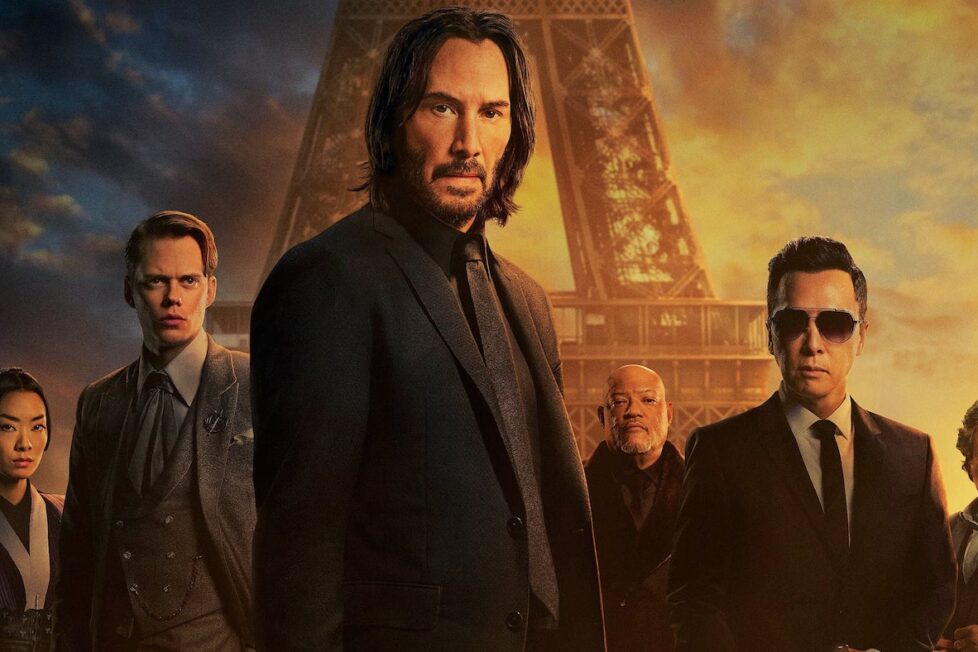
John Wick uncovers a path to defeating The High Table, but before he can earn his freedom he must face off against a new enemy with powerful alliances across the globe...


John Wick’s fists are taped up and bloodied, pounding with a gun-shot like reverberation against a wooden post. We don’t need to see any other part of him to know it’s him; in fact, we don’t need to know anything else about him to know who he is. Such is the joy of John Wick: Chapter 4, a breathless epic that hits the ground running and doesn’t stop until every last bullet in the chamber has been fired.
The fourth entry of any saga runs the risk of being a stale rehash of what came before, and often franchises begin to sweat as they attempt to pump more story from an already dry well. So it’s with remarkable confidence that director Chad Stahelski not only finds a way to make John Wick: Chapter 4 feel fresh, but to make it the most luridly fun of the whole bunch.
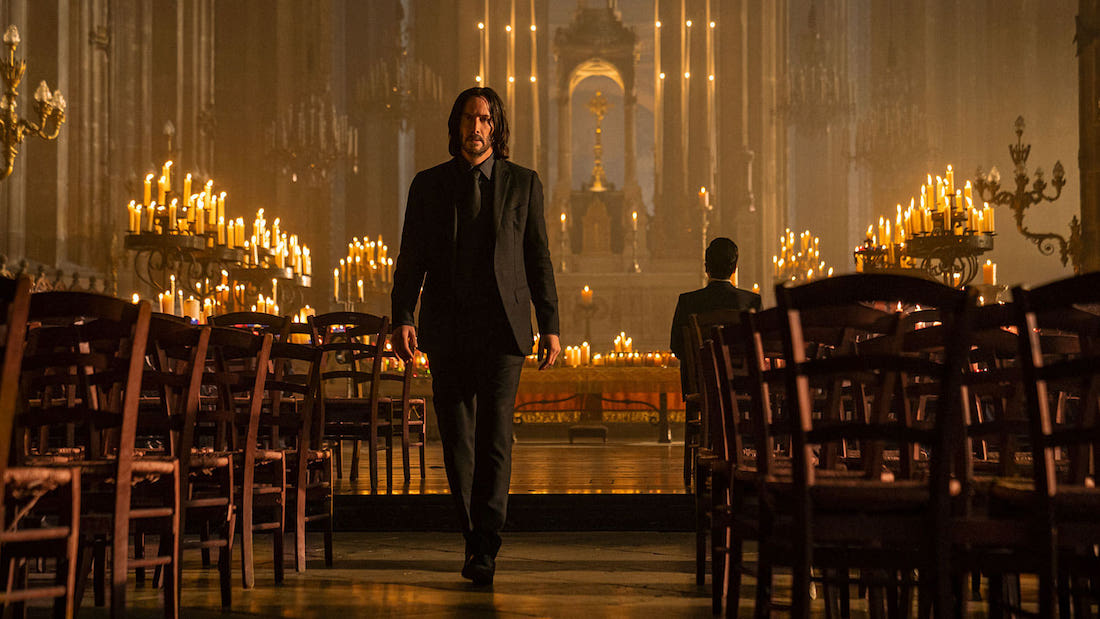
It helps that Stahelski and screenwriters Shay Hatten and Michael Finch essentially streamline the narrative dominoes that must fall for Wick (Keanu Reeves) to be back in the fray once again. After his brief re-introduction via those aforementioned punches, we find him in media res, riding a horse through Moroccan deserts on his way to take revenge on the Elder—the only living person above the High Table (the managers of a global cabal of assassins).
You’ll know where he’s going and what he’s doing if you’ve seen John Wick: Chapter 3 (2019), and the eagerness with it gets to the action is commendable. Even more so is the film calling its shot with a cut that references Lawrence of Arabia (1962), because, like Lawrence, Wick’s a character whose legend precedes him, and this is his odyssey. The sheer absurdity and confidence of evoking that classic sets the tone for what’s to come.
After the battle-worn Wick finishes his job, the film quickly introduces the Marquis of the High Table (Bill Skarsgård, adopting a French whisper and camp pompousness). For Wick’s trespasses against the high table, The Marquis wants him dead and orders the destruction of the Continental Hotel—international safe zones for all professional killers. Skarsgård is tremendously loathsome as a slimy rich boy, carrying over the hard-to-read discomfort he brought to Barbarian (2022).
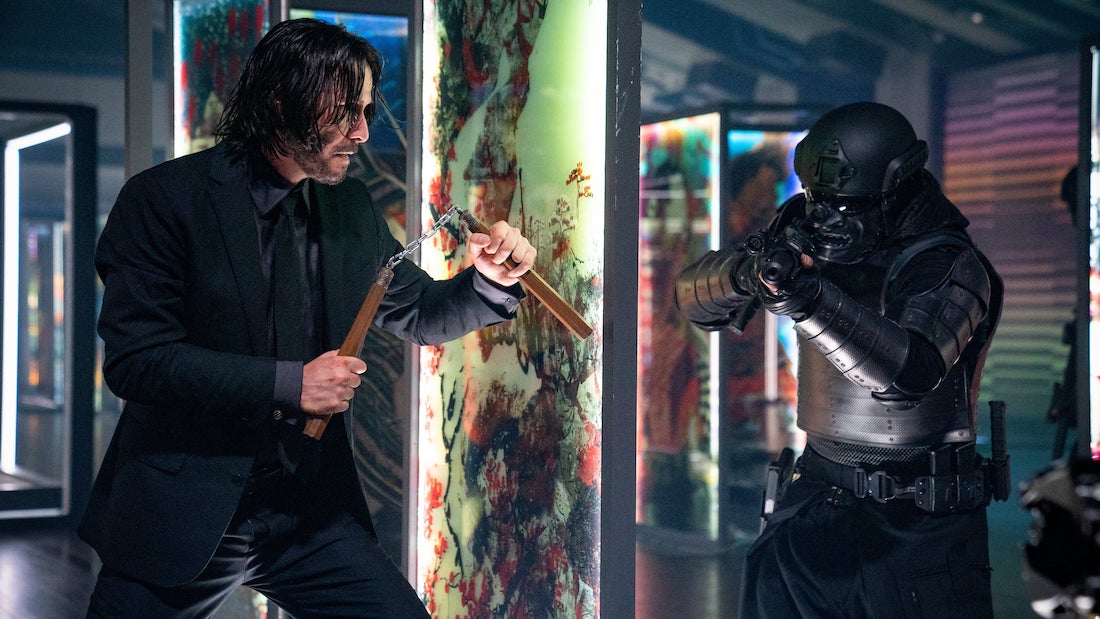
It’s uncanny how spot-on the casting decisions in the Wick films are; Clancy Brown, in particular, brings the gravitas required for a ridiculously-named character like ‘The Harbinger’, while Donnie Yen as blind assassin Caine is perhaps the saga’s greatest creation yet. Yen brings effortless emotional resonance to the character and his performance loads the combat sequences with genuine stakes. During one hotel-set rampage, Caine sits quietly contemplating a bowl of noodles before joining the action. When he finally does, he uses a cache of carefully placed doorbells to signal him to the movement of his foes… and once he engages in combat, it’s downright balletic.
In a cast stacked with incredible physical performances, it’s the legendary Yen who steals the show so thoroughly that every grace note of his scenes provoked cheers from the audience I saw it with. Caine’s been sent by the Marquis to take down Wick, with the bounty on his head starting at $20M and only going north from there. Elsewhere, there’s Mr Nobody (Shamier Anderson), a bounty hunter with a German Shepherd—who knows exactly what to attack when his owner shouts “nuts!”—who provides some down-to-earth levity. Well, after a particularly gruesome spot involving a knife, his hand, and a test of toughness demanded by The Marquis.
Characters pop in and out along the way, occasionally bisecting Wick’s path for a shootout or a brawl. And of course, it’s Keanu Reeves’ performance that holds the highest stakes and bears the most wounds from the past. He’s now missing his ring finger from an encounter in a previous film, with hundreds more scars doubtlessly hiding under his iconic black suit. What could be a problem of a franchise’s fourth film instead becomes a boon; by now, we’ve seen Wick go through hell and back. We’ve seen his wife and dog die, his house burned to cinders…. so where else to go but onwards? The wounds only make him more compelling. The quiet stoicism with bursts of hell-fire fury define Reeves’ performance, and the years of blood and death both spur him on and weigh him down so that Chapter 4 really does feel like something of a final push to the summit.
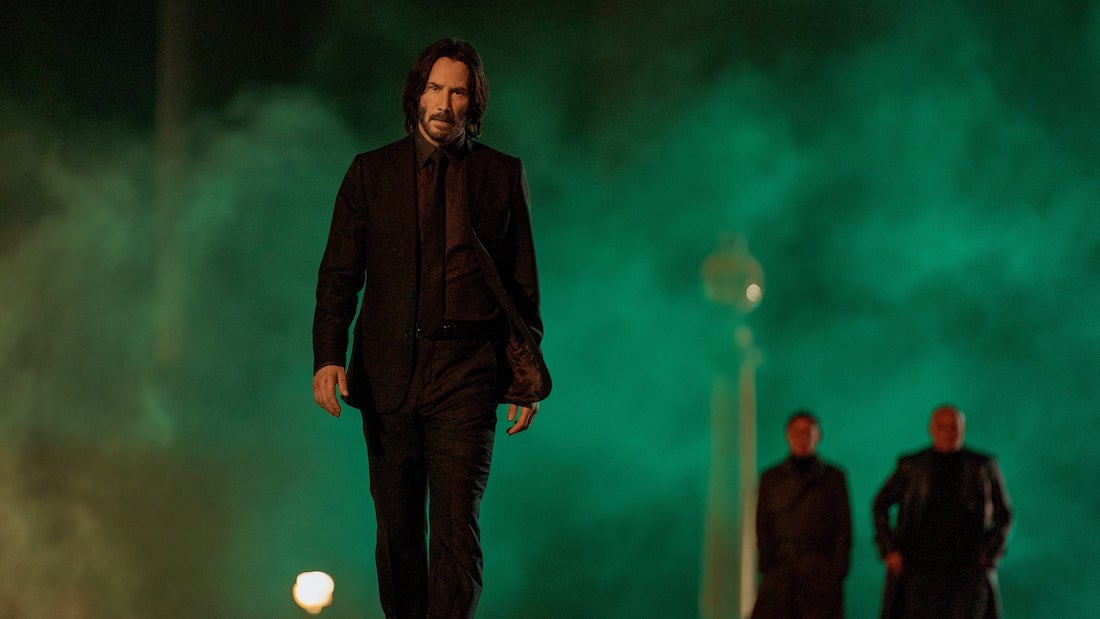
Reeves’ performance is almost entirely physical, whether sitting wounded at the bottom of a staircase or shooting his way through a house, shown to audiences in an inspired birds-eye-view. Physical performances (particularly ones with as few words as Reeves speaks) are so often overlooked, but it’s the job of an action star to craft an anchor to which the film can remain tethered, and Reeves gives soul and genuine pain to Wick. Details throughout serve as reminders that Wick isn’t a superhero but a haunted man with a gift for killing; injuries keep him down, he limps, he bruises, and he shouts in agony.
It’s one of the cornerstones of the John Wick films that make them so compelling. This is a man voluntarily putting himself through hell, over and over, and the violence against him is never just brushed off. And there’s a lot of violence. Much was made of the film’s nearly three-hour runtime, but mercifully, a lot of that time is spent not with extraneous world-building or tiresome lore indulgence. Instead, the film runs at the length it does because it can’t seem to stop throwing shit at John Wick: from industrial nightclubs to the Arc de Triomphe, nowhere is safe because everywhere’s a potential playground for violence.
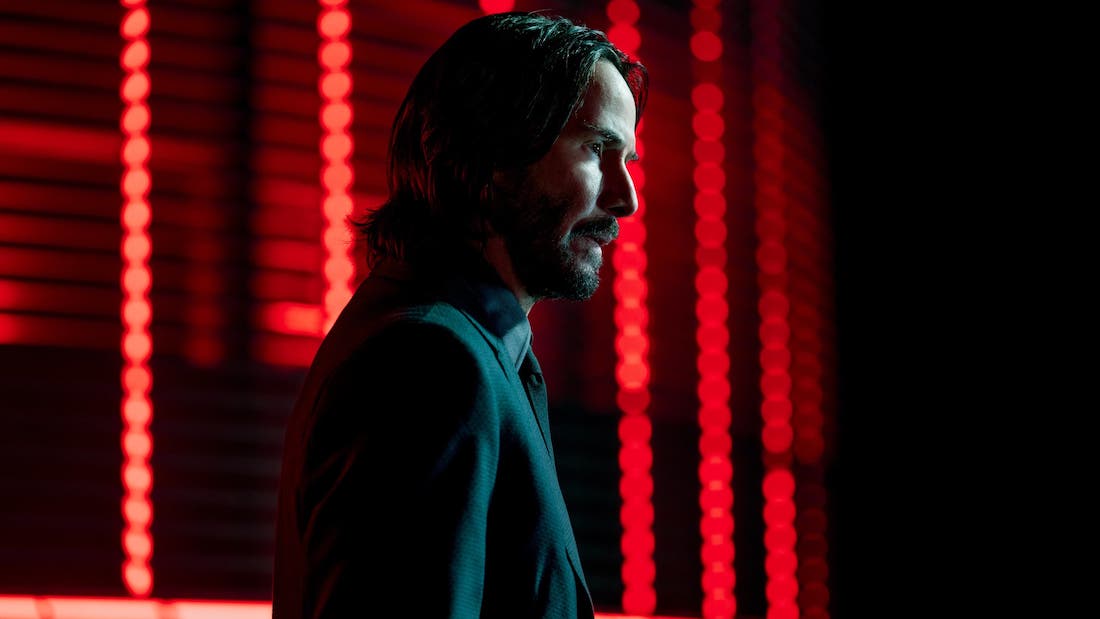
The world-building is incidental with each new wrinkle integrated seamlessly. And what isn’t essential is still a delight. Who could possibly turn down an opportunity to see Laurence Fishburne as the Bowery King again, arriving on a secret metro train at an abandoned Parisian station?
One tangential sojourn even ends up being one of the film’s best sequences, as Wick, Mr Nobody, and Caine visit the head of the German table—Killa (legendary stuntman Scott Adkins in preposterous yet brilliant prosthetics). Their card game and the ensuing battle are filled with bizarre touches, such as the henchman who can only speak the words “I am Klaus”. While Killa borders on something of a Batman villain, Stahelski keeps a tight rein over the tone of the film, becoming abruptly violent whenever it strays towards the absurd.
And the humour breaks up the bloodbaths with the perfect tension-breaking releases—with even more laughs coming from the physicality of the fights themselves. In one gag, Wick falls down a flight of stairs—all 200 of them—after methodically fighting his way all the way up them. At every new extension of his tumble, the slapstick vibe is heightened, and a moment of Jackass-style prat-falling makes the sequence sing. It’s touches like these that give the film such character and lovability; a film made by people dedicated to the craft of fight choreography, in all its brutality and hilarity.
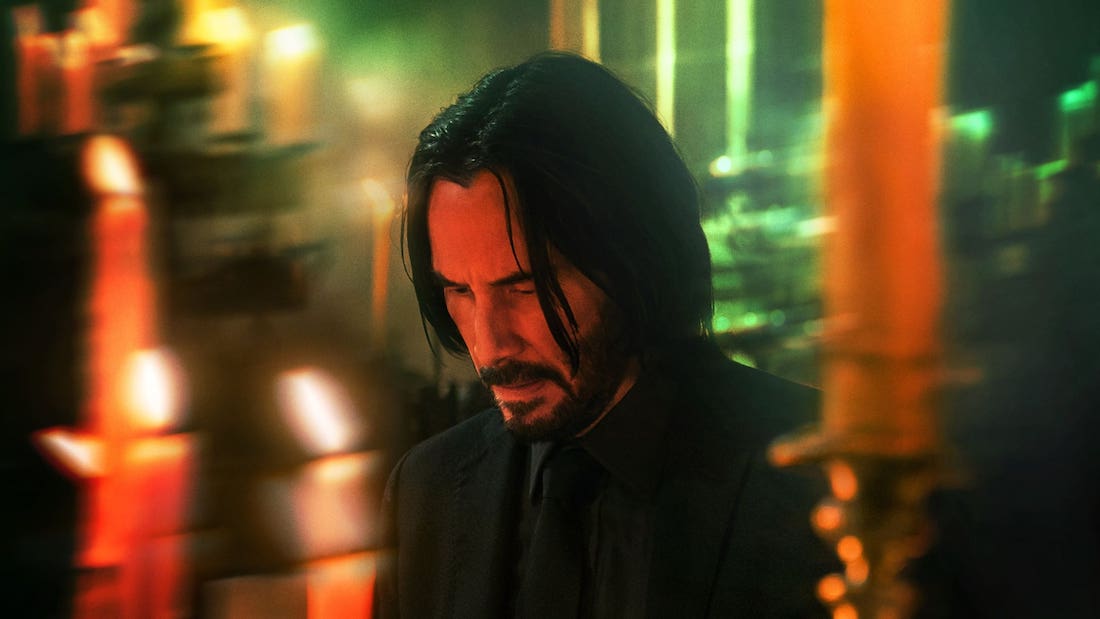
As things move towards a pistol-duel finale, the blending of Western and Samurai influences tighten, making a sort of hybrid action film to accommodate all tastes, yet compromising on none of them. The gorgeous neon visuals are eye-boggling, while the film deploys a sophisticated visual language. The Japanese blossom tree that blows gently behind Wick, for instance, makes him look as if he could so easily be blown away too; or the impossibly ornate mansion we find the Marquis residing in, which is as cold, unearned, and ostentatious as he is. It’s expressive filmmaking, maximalist in approach yet fully tactile. Stahelski finds perfect locations not only for brawls but to express something internal about his characters, perhaps things they can only say through violence. Wick has built the world he lives in and he can destroy it too. His world is growing whether he wants it to or not, with seemingly everyone out for his head. In a fun nod, the members of the High Table now receive The Warriors-style radio broadcasts from a mysterious DJ, who spins old records and announces Wick’s bounty. Again, it’s all folded into the storytelling so effortlessly.
Every element of the previous three films is extrapolated and expanded upon. Bigger doesn’t usually mean better, but here, bigger also means more ideas and audacious set pieces. In the sheer size of it all, it finds time for intimacy, and for familiar touches from the past (Ian McShane and the late, great Lance Reddick both making returns) while also adding something new and fresh to the series.
It should be said that anybody not already on board with these films will be unlikely to be won over by a fourth instalment. But for everyone else, this is an ice cream sundae with all the toppings. It doesn’t reinvent Wick’s wheel, but then it doesn’t need to. Just as John Wick himself keeps hitting that wooden post again and again, these films likewise keep hitting the spot Action filmmaking doesn’t come any more satisfying.
USA | 2023 | 169 MINUTES | 2.39:1 | COLOUR | ENGLISH

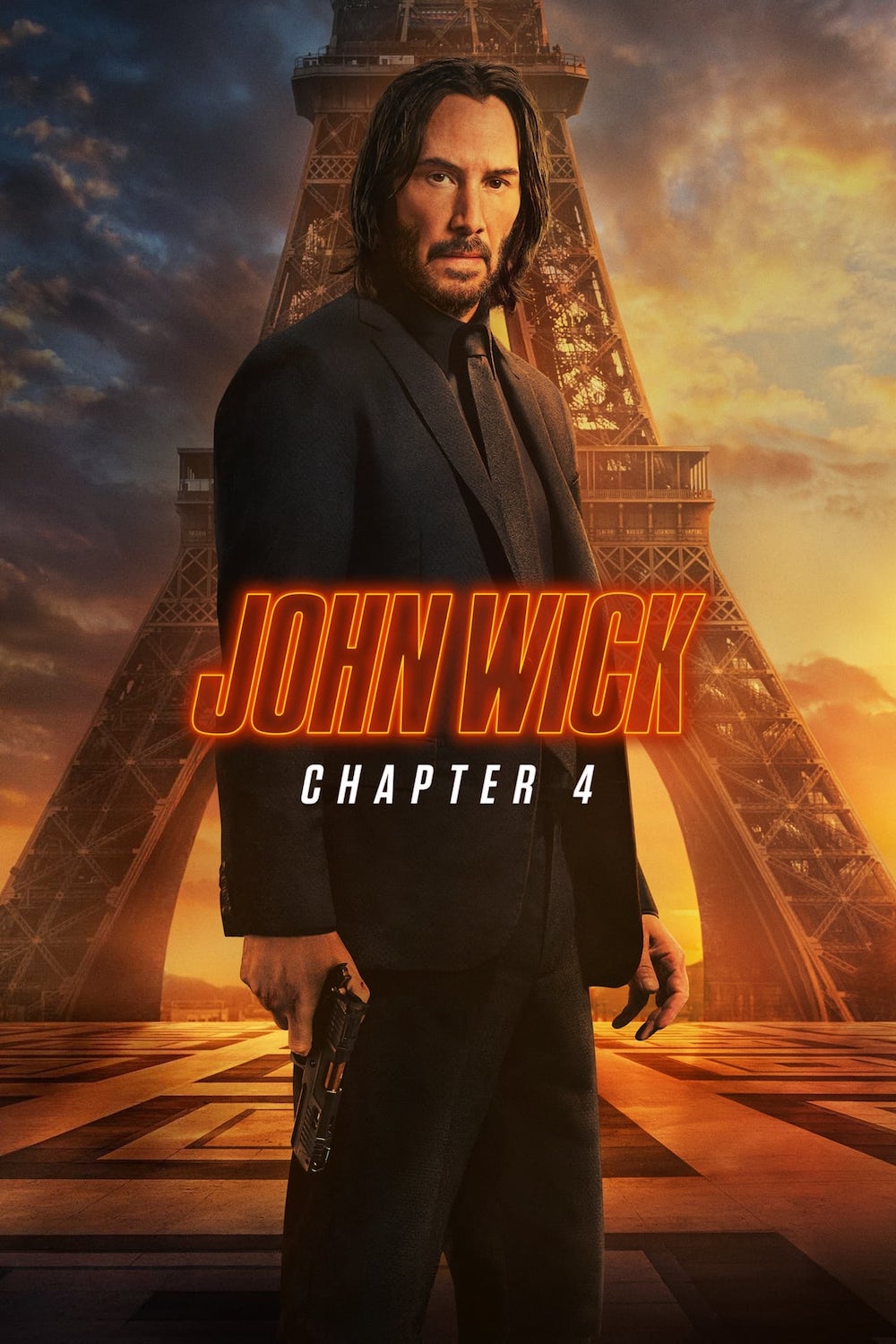
director: Chad Stahelski.
writers: Shay Hatten & Michael Finch (based on characters created by Derek Kolstad).
starring: Keanu Reeves, Donnie Yen, Bill Skarsgård, Laurence Fishburne, Hiroyuki Sanada, Shamier Anderson, Lance Reddick, Rina Sawayama, Scott Adkins & Ian McShane.
